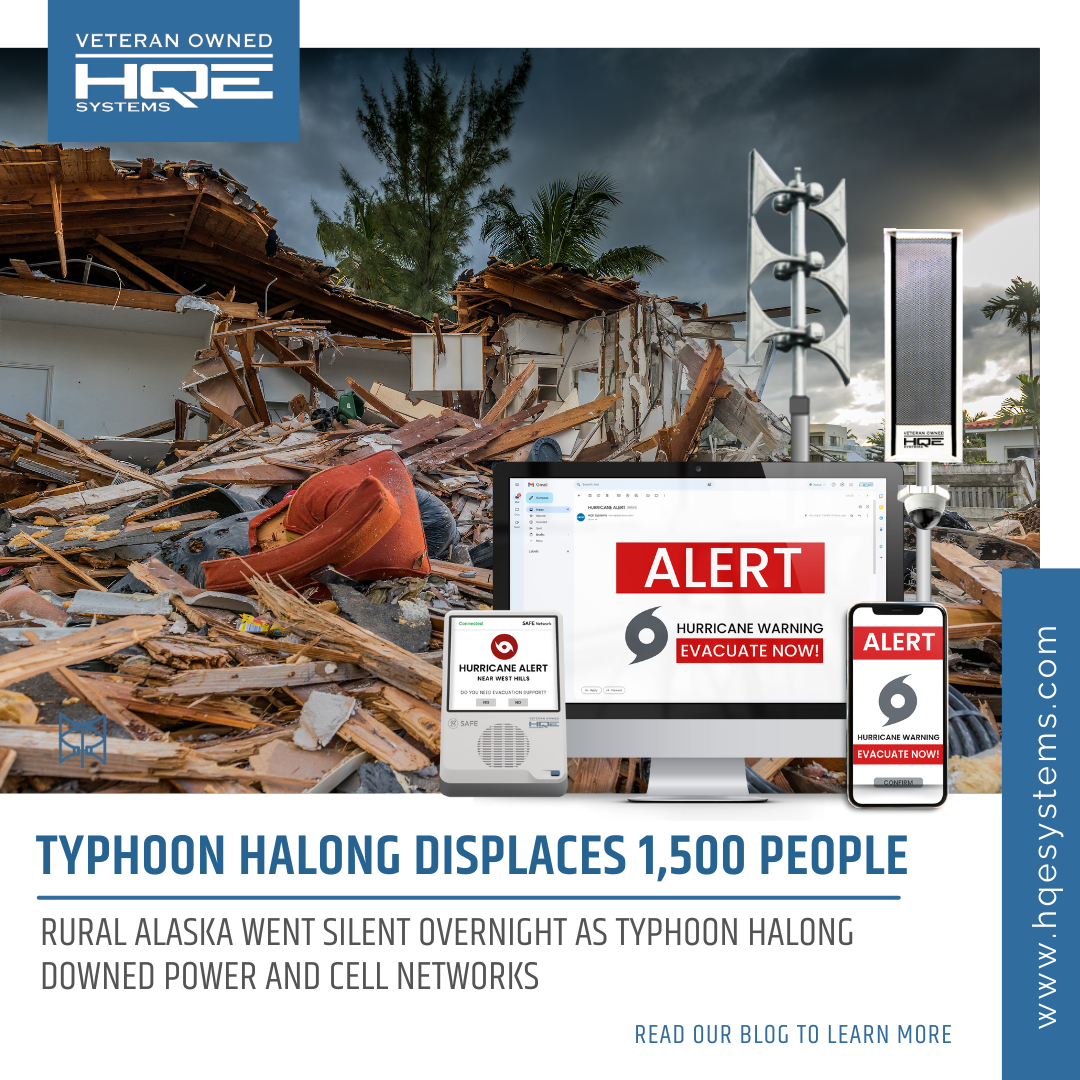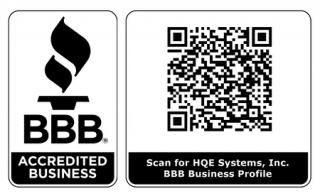The Silence That Followed
When Typhoon Halong struck the Yukon Kuskokwim Delta in western Alaska, power lines collapsed and communication systems failed, leaving remote villages isolated as the storm pushed inland. More than 1,500 residents were displaced and entire communities were cut off from help, as reported by Alaska Beacon. In those critical hours, the greatest danger was not wind or water but silence. For emergency managers, Halong revealed how vulnerable modern communication systems become when infrastructure fails at the exact moment they are needed most.
Lessons from Typhoon Halong: What Happens When Communication Fails
When Typhoon Halong made landfall in Western Alaska, emergency managers faced a challenge that extended far beyond the storm’s physical damage. Power systems failed, cell towers went silent, and communication networks collapsed, cutting off entire villages from the outside world. According to Alaska Public Media, widespread power outages and infrastructure failures left responders struggling to reach residents across the Yukon Kuskokwim Delta. The storm displaced more than 1,500 people, flooding homes and damaging roads that emergency crews needed to deliver aid, as noted by Alaska Beacon.
With communications down, responders were forced to rely on short range radio systems and satellite devices with limited coverage. Reports from Fox Weather confirmed that emergency teams in the most remote areas struggled to share real time updates about flooding levels, injuries, and supply needs. Many of these communities were unreachable for several hours, leaving residents uncertain about when help would arrive.
For emergency management professionals, this breakdown of situational awareness is one of the most critical challenges during disaster response. The ability to receive accurate, timely information determines how quickly decisions can be made and how many lives can be saved. When communication fails, even the most skilled responders operate in the dark. Coordination between state, tribal, and federal agencies slows, resource allocation becomes inconsistent, and evacuation or rescue efforts lose efficiency.
Typhoon Halong serves as a clear reminder that modern emergency communication systems remain vulnerable to the very conditions they are meant to overcome. Power and cellular networks are often built for convenience and coverage, not endurance. Once those systems fail, backup plans such as portable radios or satellite links can only bridge the gap temporarily.
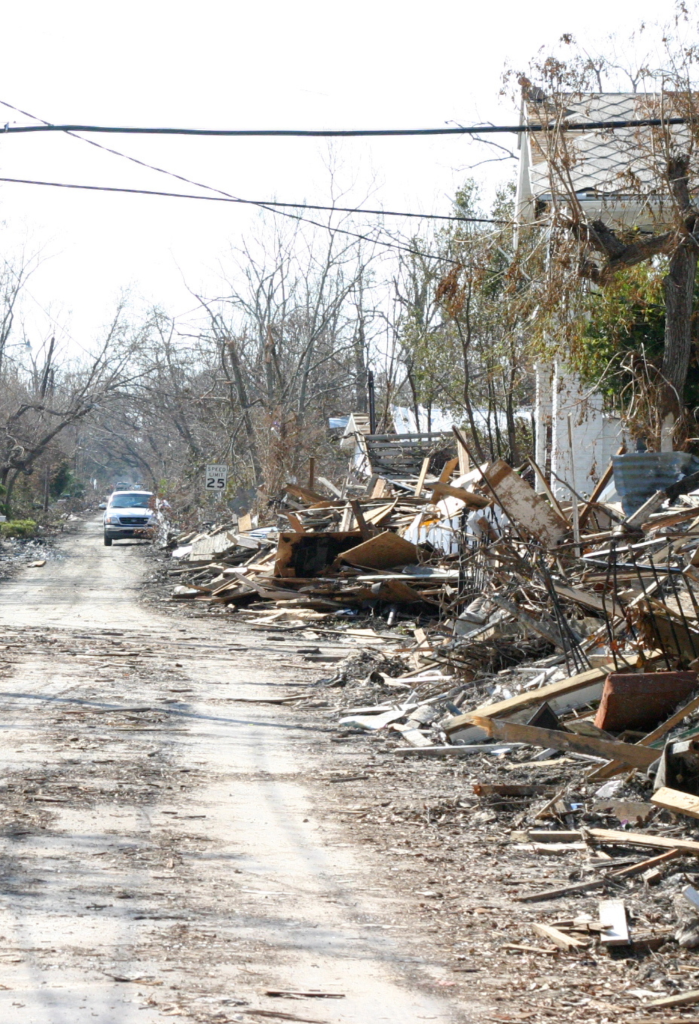

The Rural Challenge: Distance, Isolation, and Infrastructure Gaps
Alaska’s geography is both its greatest strength and its biggest challenge. The same vast wilderness that defines the state also makes communication and emergency response uniquely difficult. Many villages in the Yukon Kuskokwim Delta and along the western coast are accessible only by air or water, with limited ground infrastructure to connect them to the rest of the region. When a storm like Typhoon Halong strikes, the combination of isolation, extreme weather, and power loss turns already fragile systems into complete communication dead zones.
According to Alaska Public Media, the storm’s flooding and hurricane-force winds cut off dozens of villages from all forms of contact. Some of these areas had only a single communication tower or small power hub supporting thousands of square miles. When those limited systems failed, communities were left without situational updates or emergency alerts for hours. For emergency managers, this is not simply an inconvenience, it is a structural challenge that demands new approaches to redundancy and resilience.
Even outside of disaster conditions, maintaining reliable communication across Alaska’s rural regions is an ongoing struggle. A 2024 report by the Alaska Division of Homeland Security and Emergency Management highlighted the growing concern over outdated power grids and telecommunication infrastructure. Many systems rely on aging equipment that is difficult to repair and costly to replace due to remote logistics. The report also emphasized that limited connectivity directly impacts disaster readiness because response teams cannot test, update, or synchronize alert systems in real time.
The SAFE Network™: A Framework for Operational Continuity
When traditional infrastructure fails, continuity depends on systems built to stand on their own. The SAFE Network™ by HQE Systems was created for that purpose. It is an autonomous emergency communication platform that continues operating even when power, cellular, and internet services go offline.
The SAFE Network™ functions as a self-sustaining mesh system. Each SAFE Unit™ communicates with nearby SAFE Networks™, forming a chain of connectivity that does not rely on a central tower or commercial service provider. This decentralized structure ensures that if one Network is damaged, others remain active, maintaining regional coverage for alerts and coordination. Communication continues even when all other systems stop working.
As explained by HQE Systems, the SAFE Network™ was developed through lessons learned from field operations in remote and high-risk areas. It uses layers of communication that include indoor and portable SAFE Units™ to keep residents and responders informed. Each unit issues alerts through lights and internal audio. Because the system uses a long-life charge, it can remain active for extended periods during power outages or natural disasters.
The SAFE Network™ stands apart from traditional alerting systems through its scalability and independence. It is not a single device or limited connection. It is a network that expands with community needs. Whether deployed in a small coastal village or across multiple jurisdictions, SAFE Network™ forms an intelligent communication grid.
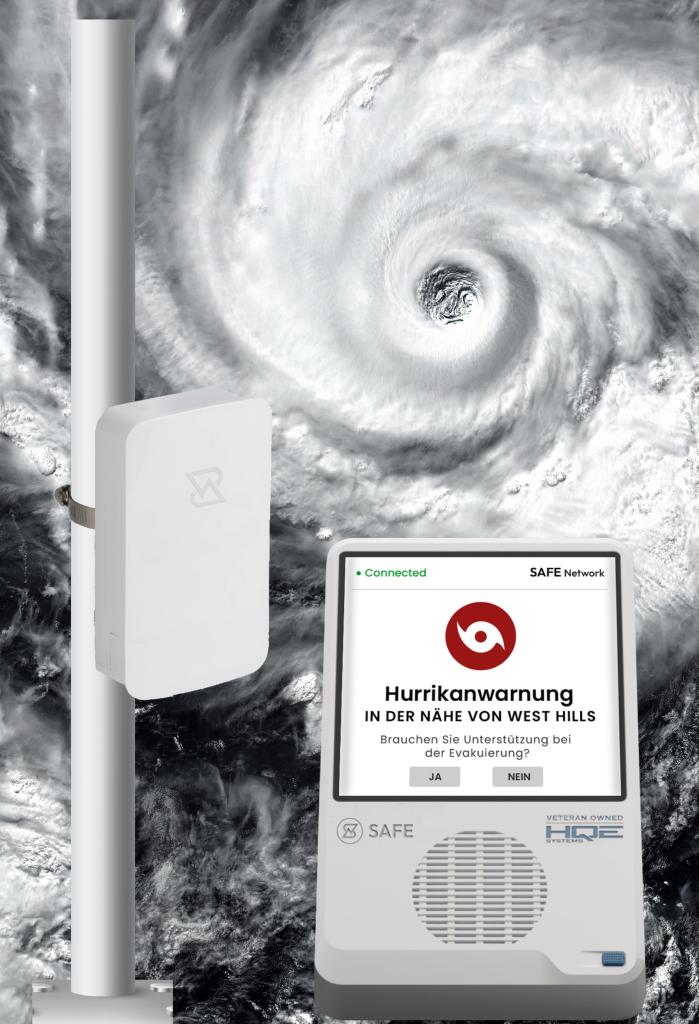
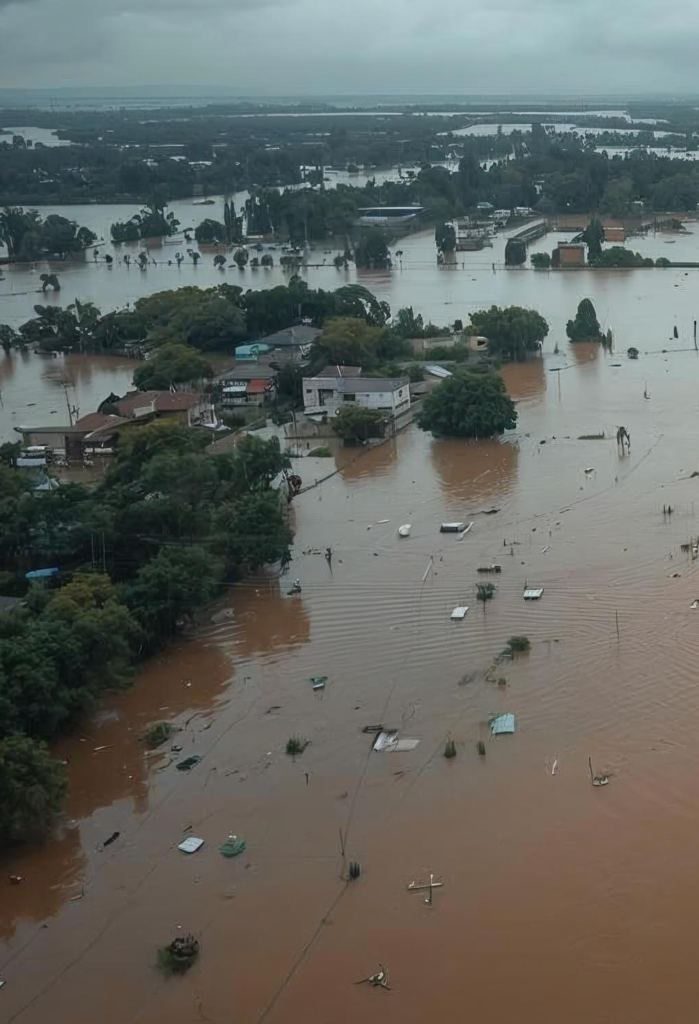
Operational Use Case: How the SAFE Network™ Could Have Changed Halong Response
In the hours leading up to the storm, the SAFE Network™ could have provided continuous updates through the indoor SAFE Units™, allowing emergency managers to broadcast real-time warnings even as weather conditions worsened. Communities could have received evacuation alerts directly inside their homes without relying on cellular networks or local power. For field teams, portable SAFE Units™ would have ensured direct communication with command centers and other responders throughout the storm’s progression.
Once Halong’s winds damaged infrastructure and cell towers, the SAFE Network™ would have automatically maintained its mesh configuration. Each operational unit would have relayed information to emergency response teams, ensuring everyone who needed help received it. This local continuity is what makes the SAFE Network™ so critical for emergency response in remote or isolated environments.
Emergency managers could have used the system to monitor status updates from each connected unit, identifying which areas had lost power or sustained major damage. With communication still active, teams could have prioritized search and rescue based on real data rather than assumptions. That type of situational awareness saves lives and reduces wasted effort during chaotic conditions.
A key strength of the SAFE Network™ is that it integrates with existing emergency management systems like FEMA’s Integrated Public Alert and Warning System (IPAWS). This allows agencies to send standardized alerts through the SAFE Network™ alongside other channels, ensuring message consistency and public trust. As confirmed by FEMA, interoperability between communication systems remains a top priority for improving national readiness.
SiSA™: Situational Awareness That Starts Before the Storm
SiSA™ integrates seamlessly with other communication platforms to provide a comprehensive emergency management solution. The platform uses multiple data sources, including meteorological feeds, environmental sensors, and satellite inputs, to detect severe weather threats early and accurately. As conditions evolve, it automatically triggers alerts that reach communities through indoor and outdoor warning systems, ensuring warnings reach people even when cellular and power networks fail.
According to the National Oceanic and Atmospheric Administration, early detection and communication remain the most effective strategies for reducing storm-related fatalities. SiSA™ supports that mission by transforming raw weather data into actionable intelligence for emergency managers. Instead of waiting for regional broadcasts or secondary reports, agencies can receive customized alerts specific to their jurisdiction, geography, and threat level.
During an event such as Typhoon Halong, SiSA™ could have monitored wind speeds, temperature fluctuations, and pressure changes days before landfall. This real-time intelligence would have provided localized forecasts and triggered automated updates across alert networks. Even as the storm intensified, emergency managers could have maintained direct communication with residents, issuing new instructions as conditions evolved.
One of the strongest advantages of SiSA™ is its ability to operate even when other systems fail. Through its integration with resilient communication platforms, SiSA™ ensures that severe weather alerts continue to move through networks without interruption. For emergency management teams, this means faster coordination, better logistics, and a clear understanding of where resources must go first.


Strengthening Resilience and Command Capability
Resilience in emergency management depends on communication that never fails. Typhoon Halong showed how quickly coordination can collapse when infrastructure does not hold. For emergency managers, the goal is not only to respond faster but to sustain command and communication across every phase of a disaster.
According to the Federal Emergency Management Agency, command continuity and reliable information flow are the foundations of effective disaster response. HQE Systems designs technology that supports those priorities through integration, automation, and resilience. Platforms such as the SAFE Network™ and SiSA™ work together to ensure communication, data, and situational awareness remain intact even when traditional systems are compromised.
For local governments and emergency operations centers, these solutions provide the visibility needed to make informed, life-saving decisions. They reduce uncertainty, maintain public trust, and help coordinate multi-agency response efforts under the most challenging conditions. By strengthening both communication and intelligence, HQE Systems helps transform emergency management from reactive recovery to proactive resilience.
When communities depend on communication to survive, reliability is not optional. It is essential. HQE Systems provides the tools that ensure leadership, clarity, and command capability endure when they matter most.
Preparedness Is Built, Not Promised
Typhoon Halong proved that even the most advanced communities can be silenced when infrastructure fails. For emergency managers, the lesson is clear. Preparedness is not built in the moment of crisis; it is built long before it arrives.
HQE Systems continues to lead in designing technology that keeps communication alive when power, cell service, and conventional networks fail. From the SAFE Network™ that ensures alert continuity to SiSA™ that delivers predictive intelligence, HQE Systems empowers agencies to act with confidence and speed when lives are on the line.
The path to true resilience begins with commitment, planning, and innovation. Every decision made today determines how communities withstand tomorrow’s challenges. To learn how HQE Systems can help strengthen your emergency communication infrastructure, visit hqesystems.com
HQE Systems is a certified Veteran Owned Company. For more information about HQE Systems Inc. and its emergency management, electronic security, and integration solutions, please visit www.hqesystems.com.
Contact: David Ditto (Early Warning Systems Subject Matter Expert)
Email: David.Ditto@hqesystems.com
Phone Number: (843) 872-7020
____________________
HQE Systems, Inc. | HQE is a Minority-Owned Service Disabled Veteran Owned Small Business (SDVOSB) providing full solutions for: Mass Notification Systems, Electronic Security Systems, Software Development Services, Contract Support, and Prototyping Services. As a brand-agnostic solutions provider, HQE prides itself in providing the BEST solution for the project. HQE possesses over 30+ factory certifications and reseller licenses to ensure our clients receive the highest quality service at the ideal budget. HQE can provide full design, installation, integrations, upgrades, and long-term maintenance support for any size and scope project.

